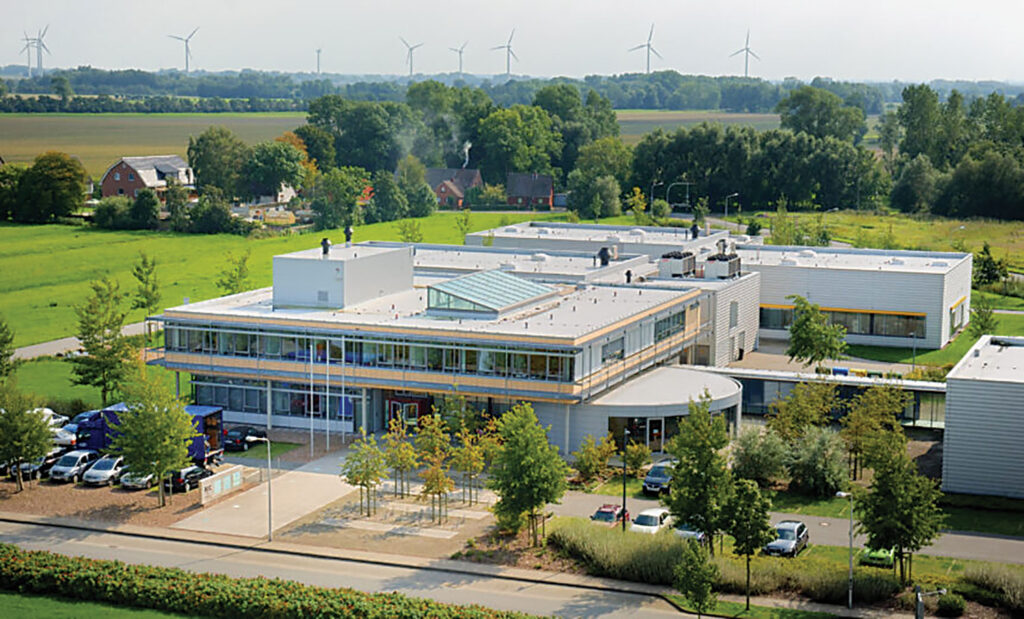Ever alert to new opportunities, contract development and manufacturing organizations (CDMOs) are well aware that cell and gene therapies are generating excitement among industry analysts. For example, Deloitte recently predicted that the cell and gene therapy market will generate revenues of $12 billion a year by 2025, which is an impressive jump for a market valued at just $1 billion three years ago. Deloitte indicated that its prediction was based on the high level of activity in cell and gene therapy R&D—more than 1,000 clinical trials were ongoing in 2019—and the large number of developers entering the space.
Whether such growth actually occurs will depend on whether cell and gene therapies can be developed and manufactured efficiently, suggests Travis Whitfill, PhD, a partner at biotech venture capital firm Bios Partners. He insists that bioprocessing technologies such single-use and in-line processing technologies will need to be implemented more widely.
This view is shared by Nitin Naik, healthcare and life sciences global business leader at Frost & Sullivan. “The need to launch innovative therapies such as cell and gene therapies more quickly and economically has pushed industry to innovate, he notes. “The ability to step up manufacturing in terms of its productivity and scale-up across global sites is critical.”
Importance of outsourcing
In the small-molecule and traditional biologics sectors, the main way to accelerate development and increase scale has been to outsource production. And outsourcing is also used in the cell and gene therapy space.
“There’s an increasing tendency to outsource because biopharma companies have limited resources,” explains Whitfill. “In many cases, they would like to allocate those resources to activities like R&D instead of manufacturing.”
However, the production of cell and gene therapies is more complex than that of small-molecule drugs, particularly in terms of achieving consistency. As a result, it is important that developers looking to outsource to CDMOs also work with technology suppliers to make sure production is consistent.
“Technology suppliers have a big role to play to influence biopharmaceutical companies in adopting a process simplification mindset,” Naik points out. “Suppliers are leveraging advanced materials or analytical tools to expand bioprocessing applications to a wide range of conditions and improve portability of the processes.”
AI-based production processes are an example. “There are several proof-of-concepts using AI and machine learning that have demonstrated reductions in manufacturing cost or higher productivity,” Naik elaborates. “However, these approaches rely on consistent equipment performance and access to sophisticated process analytical tools. Equipment performance variation across global sites remains a challenge, and so does integration. So, platform ability is the biggest barrier.”
Advantages of a technology-agnostic approach
Charles River Laboratories (CRL), long known as a research services firm, says that it is expanding its manufacturing business while pursuing a “technology agnostic” strategy that emphasizes innovation and flexibility. In March, for example, CRL bought Cognate BioServices and its subsidiary Cobra Biologics to add cell and gene therapy production capabilities and capacity. And in May, CRL announced another acquisition in the production services space, unveiling a plan to buy gene-therapy-focused CDMO Vigene Biosciences.

With the Cognate and Vigene acquisitions, CRL may reorient its manufacturing business to serve a different mix of biopharma companies. It may also embrace new technologies.
“[We are adding Cognate’s and Vigene’s] premier development and manufacturing capabilities to our existing expertise,” says Mike Austin, corporate vice president, Global Operations Cell and Gene Therapy CDMO Services, CRL. “[Our combined capabilities allow] clients to bring their cell and gene therapies from early research and discovery all the way through commercialization in a single, streamlined program.”
“The extent to which Cognate’s manufacturing operations are digitized is largely process and client dependent,” he continues. “We purposefully keep our operations technology agnostic, so the manufacturing process can be tailored to specific client needs: each client specifies which equipment they would like to use, leading to some being very closed and automated, while some are open and manual.”
Austin emphasizes that the collation, management, and application of manufacturing process data is core to Cognate’s strategy: “Across the organization, Cognate has implemented a number of technologies to standardize and automate operations. We utilize an electronic documentation system, which also handles deviation and Corrective Action and Preventive Action (CAPA) procedures. In the labs, there is an electronic laboratory information management system that produces the final Certificate of Analysis used in final batch release.”
Cognate is adept at leveraging partnerships. Last year, for example, it partnered with L7 Informatics to deploy L7’s Enterprise Science Platform (ESP) and implement an integrated manufacturing and lab system. ESP is a unified data and process automation platform covering manufacturing, quality control, clinical operations, and real-time process intelligence products powered by Microsoft PowerBI.
“Due to the complexities associated with multiproduct facilities and cell and gene manufacturing processes, Cognate required a bimodal, composable platform to provide both a flexible and comprehensive electronic solution,” Austin explains. He adds that ESP provides Cognate with the ability to host various CDMO workflows and adapt existing models to fit projects.
According to Austin, CRL plans to use ESP to enable Cognate’s digital twin technology, a real-time digital manufacturing process model, to apply machine learning and data science methods to self-optimize, self-correct, and automate manufacturing operations.

CRL will also leverage relationships with suppliers ensure its manufacturing business caters to the full range of customer demands. “Innovative manufacturing technologies are driven through relationships with key suppliers,” says Austin. He cites Cognate’s partnerships (through Cobra)with bioprocessing systems firm Cytiva, as well as Cognate’s viral vector–focused deal with Pall, to suggest how the firm monitors innovation. “As an organization,” he declares, “we will perform proof-of-concept work with our partners to make strategic, informed recommendations on how our clients should set up their processes.”
Nonviral transfection technology
Transfection methods include electroporation, nanoparticle-based methods, and viral vector–based methods. The choice depends on both the nature of the project and the target cell involved.
And therein lies the challenge. Some cell lines are more difficult to work with than others, according to Nina Novak, PhD, a product manager at the Swiss CDMO Lonza. “Most primary cells … are harder to transfect than [production] cell lines,” she says. “Basically, there are no one-fits-all conditions to transfect primary cells, which makes the optimization process time consuming.
“However, even some [production] cell lines need enhanced transfection conditions. Cells relevant for cell therapeutic approaches, usually blood or stem cells, are notoriously hard to transfect. In addition, many cell therapeutic approaches require quite complex transfection scenarios.”
These include instances in which gene editing techniques are used, or in which several cargos of different molecules need to be transferred in parallel. Similar challenges are faced if chimeric antigen receptor (CAR) T cells are generated using transposon/transposase-based systems, or if induced pluripotent stem cells are reprogrammed using episomal vectors.
“This can be challenging when using chemical transfection reagents,” Novak elaborates. “Also, viral approaches can have their limitations, be it in insert size, co-transduction capabilities, cargo flexibility, production costs, insertional mutagenesis, or immunogenicity.”
So, while most cell and gene therapy firms use vectors, many also examine alternative transfection approaches. “Despite the fact that a big proportion of cell therapies are developed based on viral approaches, nonviral approaches are often pursued in parallel,” Novak tells GEN. “Drivers behind adopting a nonviral approach are most likely cost and safety reasons. For cell and gene therapy applications, there is a demand to transfect high cell numbers with high efficiency without being dependent on viral vectors.”
Lonza’s vector alternative is its Nucleofactor platform. The system—which celebrates its 20th anniversary this year—is an electroporation device that delivers a pulse to the target cell, prompting the uptake of DNA.
“The electrical pulses allow for DNA transfer directly into the nucleus,” Novak says. “Therefore, gene expression after transfection can be observed in four hours or less. Other transfection methods depend on breakdown of the nucleic membrane for DNA uptake into the nucleus and subsequent gene expression.”
A recent iteration of the platform is known as the 4D Nucleofector system. It can transfect up to one billion cells in one experiment. “This high cell number is suited especially for autologous cell therapy applications,” she asserts. “Researchers can optimize their experiments in small scale and transfer these conditions to their high-cell-number clinical applications; this can bring a competitive advantage in the development of therapies.”
In cell therapy manufacturing, transfection choices also affect the upscaling of processes that typically occurs when processes are transferred from development to manufacturing. Lonza’s system was designed with this kind of upscaling in mind, according to Novak, who says “Transfection protocols established on the existing smaller-scale unit can be smoothly transferred to the new large-scale unit without the need for reoptimization.”
Several of Lonza’s customers are running clinical trials using Nucleofector Technology, including researchers led by the U.S. National Cancer Institute in a Phase I study using CAR-T therapies to treat B-cell malignancies.
GEN freelance writer Gareth John Macdonald provided the background and initial reporting which this article is based.


